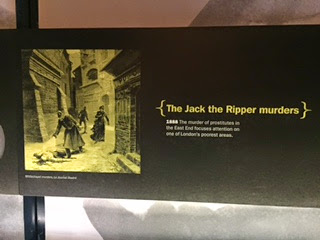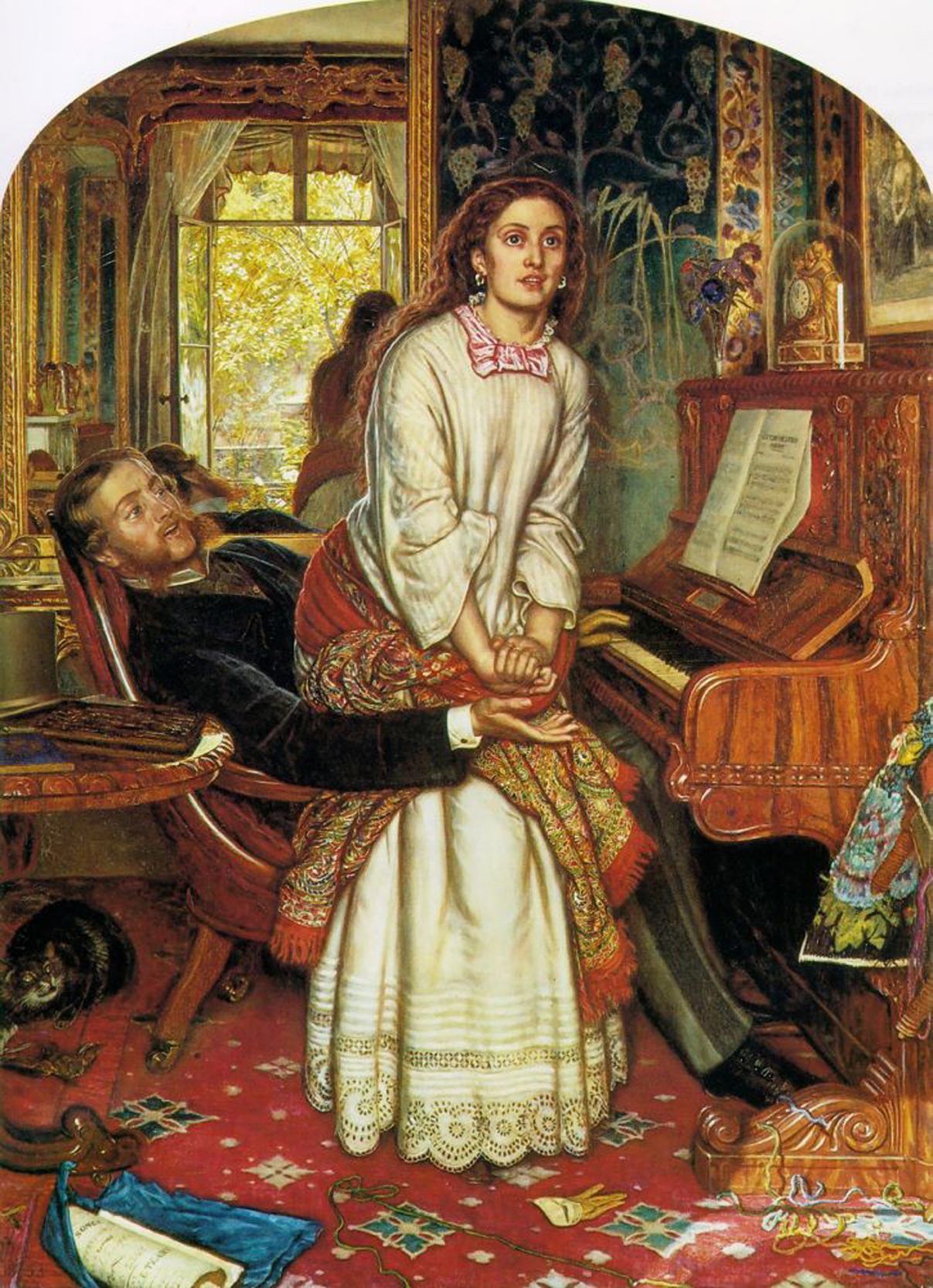Downward Mobility
In the Victorian Era, society was painted as one to be of moral uprightness, religious values, and clear class divisions were a contributing factor to these ideals. The huge gap between the working classes and the upper classes was the fine line between what was seen as moral high standing and what wasn't. Downward mobility can be seen as an issue in the Victorian Period. The term 'downward mobility' can be defined as social implications that hinder progress, whether these implications be social, economic or political. This is a lack of progress namely for the working classes in most senses. These social factors created issues that were taboo that created barriers and difficult situations. In order to focus on what caused 'downward mobility', I will be focussing mainly on the social implications, whilst touching on some of the economic factors that affected social ones. Prostitution and drug abuse will be the focal social implications that I will be focussing on in this piece of research.
Prostitution was a widespread problem in the Victorian era. This diagram shows the Metropolitan Police's records of the number of prostitutes , and how they were housed;
 |
| Metropolitan Police Record |
In the modern age, when someone thinks of prostitution , the notorious Jack the Ripper crimes that sent shock waves through Victorian England, are what comes to mind. Prostitution was a widespread issue at the time, with Victorian Literature portraying the character of the 'Fallen Woman' quite frequently.
 |
| Jack the Ripper 'Museum of London' |
Elizabeth Gaskell was one of the Victorian authors that presented this character of the 'fallen woman' through the character of Esther in her 1848 novel 'Mary Barton'. Gaskell portrays to the reader Esther's woes of living the life she lives a prostitute;
"'What shall I do? How can I keep her from being such a one as I am; such a wretched, loathsome creature! She was listening just as I listened, and loving just as I loved, and the end will be just like my end…God keep her from harm! And yet I won't pray for her; sinner that I am! Can my prayers be heard? No! they'll only do harm. How shall I save her?'" (122)
Gaskell shows that as a prostitute , Esther has been limited to being lesser than , which is already lowered , because of her gender and her inability to have a voice in Victorian England, which has further been quietened due to the fact that she is a prostitute.In Victorian England, at the time Gaskell was writing there were members of society, including prostitutes, who were downtrodden and looked down upon, and were rejected from their communities - and this shows that there was a form of downward mobility in the Victorian era, because prostitutes often failed to move on with their lives , and this is presented through art also, for example;
 |
| Found Drowned by George Frederic Watts RA (1817-1904). 1867. |
Watts painting's title 'Found Drowned' indicates suicide. It shows the body of a woman who was found drowned underneath Waterloo Bridge. These types of paintings show the woe of the 'fallen woman' in Victorian society, and it can be assumed that the woman killed herself due to being a prostitute, as this was something that occurred at the time.
The role of women was also questioned, as they were often presented as the ones luring men, and entrapping them in immoral activity. This painting shows a woman supposedly 'leading a man to adultery' and encapsulating him in her trance;
 |
| William Holman Hunt 'The Awakening Conscience' (1853) |
This idea that women were the cause of these 'immoral' actions was a widespread one in the Victorian Community, so much so that laws were passed that favoured men over women. The Contagious Diseases Acts of 1864, 1866, and 1869 are striking examples of this 'blame game'. Megara Bell argued;
"The Acts made the assumption, that prostitution was a permanent and necessary evil. They condoned male sexual access to fallen women and were specifically directed at women in order to protect the health of men. If the priority had been to fight VD, then inspecting the prostitutes' clients would also have been required by the Acts. However, the assumption was that, while men would be offended at the intrusion, the women were already so degraded that further humiliations were of no consequence. ["The Fallen Woman in Fiction and Legislation"]
The issue of prostitution in Victorian England was one that hindered the progress of women, particularly working class women, who turned to lives of prostitution due to their lives of poverty. These social issues of morality were arguably ones that stemmed from the striking poverty lines, and the fact that class divisions were so wide in this period. Therefore, it can be argued that prostitution was a huge factor that created downward mobility ,rather than progress.
To follow the theme of 'immorality', substance abuse in the Victorian era was a taboo subject, often hidden. It was an issue that was widespread amongst the different social groups. Drugs such as opium and heroin were particularly present in this era, and often covered up.
London's 'Museum of London' has an exhibit called 'Victorian Walk', and here evidence suggests that drug use was quite popular.
 |
| Victorian Walk |
 |
| Drug Jar |
 |
| Explanation of artefact |
The Victorian Era had issues of drug abuse and
OPIUM
1839: Opium Deaths
Opium and its preparations are responsible for more premature deaths than any other chemical agent. Opiates account for 186 of 543 poisonings, including no fewer than 72 among children.
18 March 1839: First Opium War
Lin Tse-Hsu, imperial Chinese commissioner in charge of suppressing the opiumtraffic , orders all foreign traders to surrender their opium. In response, the British send expeditionary warships to the coast of China, beginning The First Opium War.

1840: New England Imports Opium
New Englanders bring 24,000 pounds of opium into USA. US Customs promptly put a duty fee on the import
1856: Second Opium War
Britain & France win. Opium production increases.
Also, there were many famous Victorian drug addicts - as listed below;
Famous Victorian Drug Addicts
• Elizabeth Eleanor Siddal (1829–1862) = British model, poet, artist = addicted to laudanum ... 1st PG stillborn due to addiction ... 2nd PG Siddal overdosed ... Rossetti found her unconscious and dying in bed ... some say she left a suicide note that the doctor told Rossetti to burn
• poet & painter Dante Gabriel Rossetti (1828-1882) addicted to chloral hydrate
• ElizabethBarrett Browning (1806-1861) = lifelong addict (started in childhood to treat spinal tuberculosis) ... had miscarriage because of abuse
• Samuel Coleridge(1875-1912) ... addicted to laudanum most of life ... the Royal Institute commissioned Coleridge to give a series of lectures in London... his use of opium caused him to cancel scheduled appearances
• Percy Bysshe Shelley (1792-1822) suffered raging laudanum-induced hallucinations
• John Keats (1795-1821) suffered from cocaine, heroin,alcohol addiction
• Lewis Carroll (1832-1898) some say the inspiration of Alice in Wonderland came from his substance abuse hallucinations
• laudanum addict = novelist Charles Dickens (1812-1870)
• laudanum addict = novelist Wilkie Collins (1824-1889)
• Charles Tennyson (brother of Alfred Tennyson) was an opium addict (his poem Silkworms and Spiders alludes to his addiction)
1839: Opium Deaths
Opium and its preparations are responsible for more premature deaths than any other chemical agent. Opiates account for 186 of 543 poisonings, including no fewer than 72 among children.
18 March 1839: First Opium War
Lin Tse-Hsu, imperial Chinese commissioner in charge of suppressing the opium

1840: New England Imports Opium
New Englanders bring 24,000 pounds of opium into USA. US Customs promptly put a duty fee on the import
1856: Second Opium War
Britain & France win. Opium production increases.
Also, there were many famous Victorian drug addicts - as listed below;
Famous Victorian Drug Addicts
• Elizabeth Eleanor Siddal (1829–1862) = British model, poet, artist = addicted to laudanum ... 1st PG stillborn due to addiction ... 2nd PG Siddal overdosed ... Rossetti found her unconscious and dying in bed ... some say she left a suicide note that the doctor told Rossetti to burn
• poet & painter Dante Gabriel Rossetti (1828-1882) addicted to chloral hydrate
• Elizabeth
• Samuel Coleridge(1875-1912) ... addicted to laudanum most of life ... the Royal Institute commissioned Coleridge to give a series of lectures in London... his use of opium caused him to cancel scheduled appearances
• Percy Bysshe Shelley (1792-1822) suffered raging laudanum-induced hallucinations
• John Keats (1795-1821) suffered from cocaine, heroin,
• Lewis Carroll (1832-1898) some say the inspiration of Alice in Wonderland came from his substance abuse hallucinations
• laudanum addict = novelist Charles Dickens (1812-1870)
• laudanum addict = novelist Wilkie Collins (1824-1889)
• Charles Tennyson (brother of Alfred Tennyson) was an opium addict (his poem Silkworms and Spiders alludes to his addiction)
This shows that drugs were a widespread thing in the Victorian era, and this also highlights the extent to which this was downward mobility. From drug abuse there were many issues that sprouted from this, such as disabilities in newborns, health implications and death - as well as the side effects of the drugs itself.
 |
| A Third of Londoners lived in poverty |
In order to understand 'downward mobility', it needs to be taken into account the extent to which class and economic factors had a role to play in the issues that are raised. Prostitution for some, could have been a direct result of poverty, although the lines for drugs are quite blurred, this idea of moral highness in the upper classes is also missing. Therefore it can be argued that 'downward mobility' was something that was of experience for both classes, although the repercussions were mainly towards the working classes.
BIBLIOGRAPHY
Gaskell, E 'Mary Barton' (1848)
http://victoriantruth.blogspot.co.uk/2008/07/substance-abuse-in-victorian-era.html
http://www.gober.net/victorian/reports/prostit.html#sg
http://www.victorianweb.org/authors/wilde/shaw.html
Investing online has been a main source of income,that's why knowledge plays a very important role in humanity,you don't need to over work yourself for money.All you need is the right information,and you could build your own wealth from the comfort of your home!Binary trading is dependent on timely signals,assets or controlled strategies which when mastered increases chance of winning up to 90%-100% with trading. It’s possible to earn $10,000 to $20,000 trading weekly-monthly,just file a complaint with Robert,I had almost given up on everything about binary trading and ever getting my lost funds back,till i met with him,with his help now i have my lost funds back to my bank account and I can now trade successfully with his profitable strategies and software!! Email: Robertseaman939@gmail.com or Fb.me/investandmakemoney1 or whatsApp: +44 7466 770724
ReplyDelete
ReplyDeleteI started on COPD Herbal treatment from ULTIMATE LIFE CLINIC, the treatment worked incredibly for my lungs condition. I used the herbal treatment for almost 4 months, it reversed my COPD. My severe shortness of breath, dry cough, chest tightness gradually disappeared. Reach Ultimate LIFE CLINIC via their website at www.ultimatelifeclinic.com I can breath much better and It feels comfortable!